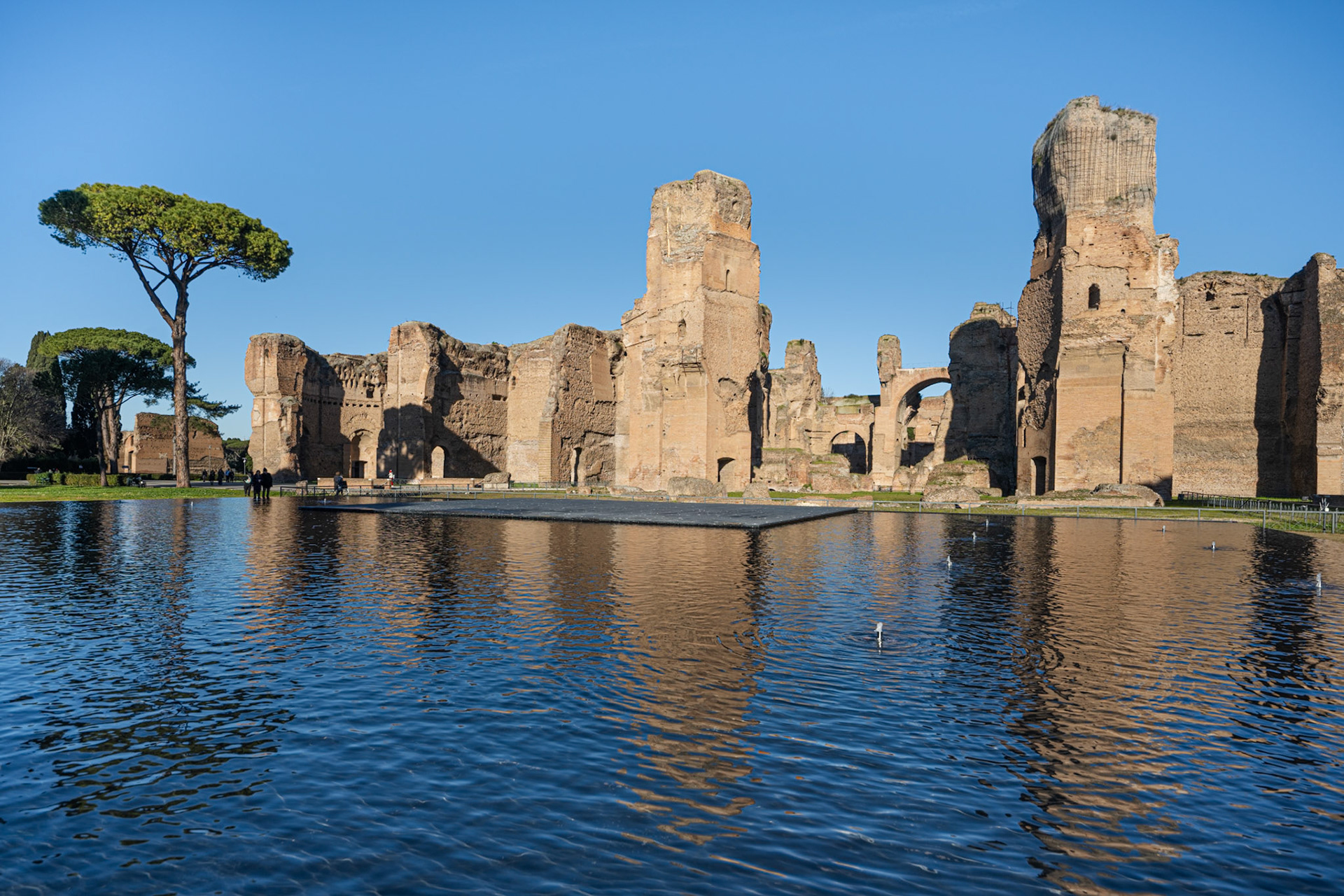Built between 212 and 216 AD under Emperor Caracalla, these grand baths located in the southern area of the city were not just a place for bathing but also a social and cultural hub.
Covering over 25 hectares, the complex could accommodate up to 1,600 bathers at a time. The baths followed the traditional Roman thermae layout, featuring cold baths (frigidarium), warm baths (tepidarium), hot baths (caldarium) and an open-air olympic size swimming pool. Beyond bathing, the complex housed gymnasiums, libraries, gardens, and shops, making it a multifunctional space for leisure and learning.
The baths were an architectural masterpiece, with towering brick and concrete walls reaching up to 30 meters high.

Baths of Caracalla with its up to 30 meters high walls
The interiors were lavishly decorated with marble floors, intricate mosaics, frescoes, and colossal statues, fragments of which can still be seen today.

Baths of Caracalla - mosaic floor
Opened in April 2024, Lo Specchio (The Mirror), is a 42 by 32 meters large pool with a stage, built to plans by architects Hannes Peer and Paolo Bornello.

Baths of Caracalla - Lo Specchio
The baths were used until the 530s AD.
You may also like